To experience the ultimate mountain adventures of climbing Mount Kilimanjaro, you should have an open mind on what to expect while on the mountain. Kilimanjaro’s greatest appeal is that anyone can climb it; It is a walkable mountain that does not demand much in terms of expertise and special mountaineering skills. You may be a professional runner, secretary, farmer, Grade 10 student, or pensioner. Whoever you are, you may climb the tallest peak in Africa without even a single piece of climbing gear or any prior climbing knowledge. You can reach the summit if you have sturdy hiking boots and stamina.
It is a challenge and test of perseverance and pushing yourself to achieve your ultimate goal of reaching the summit.
It may sound easy, however, but that does not mean that scaling this incredible natural beauty will be simple. It is a strenuous climb on the uneven ground exposed to the elements in frequently difficult weather.
However, we can guarantee you a sense of accomplishment and the panorama from the summit, Uhuru Peak will make all the effort worthwhile. Here is what to anticipate along the route in the interim.
Get the ultimate Kilimanjaro experience with Tranquil Kilimanjaro
Often called the Roof of Africa and the tallest free-standing mountain in the world, Kilimanjaro has a height of 19,340 feet (5895 meters). It draws climbers from all around the world. The extinct volcano stands alone above the African plains and provides a 360-degree panorama of the Maasai Steppe below.
Although the ascent is anything but regular, physically strong and driven travelers can reach the peak with the help of well-thought-out logistics and astute altitude management. The ascent is breathtaking, providing a one-of-a-kind journey through several climatic and ecological zones as well as breathtaking views that must be seen to be believed. Those who are brave enough to experience the ultimate climb of Mount Kilimanjaro return emotionally and physically drained.
In addition to one unusual and remote trail, the Western Breach Route, we provide five designated and safe ascent routes up Kilimanjaro. To learn more about our Lemosho Crater, Lemosho, Machame, Umbwe, and Rongai routes as well as our brand-new Northern Circuit route, please see this page to choose the best route for you. The first two nights of your climb trip are spent in our recommended hotels on Moshi, which provide a distinctive cultural experience on the foothills of Kilimanjaro.
Arriving in Tanzania for your climbing experience
Tranquil Kilimanjaro drivers will meet you at the famous Kilimanjaro International Airport and transport you to your hotel. One of our operations managers or the climbing coordinator will provide a full pre-climbing briefing and the Tranquil Kilimanjaro team will inspect your gear to see whether you are adequately prepared with what you already own or if you need to borrow anything from us. It will be easier to get everything organized, have a full night’s sleep, and attend the briefing if you arrive at least a day before the climb.
Your mountain crew and company
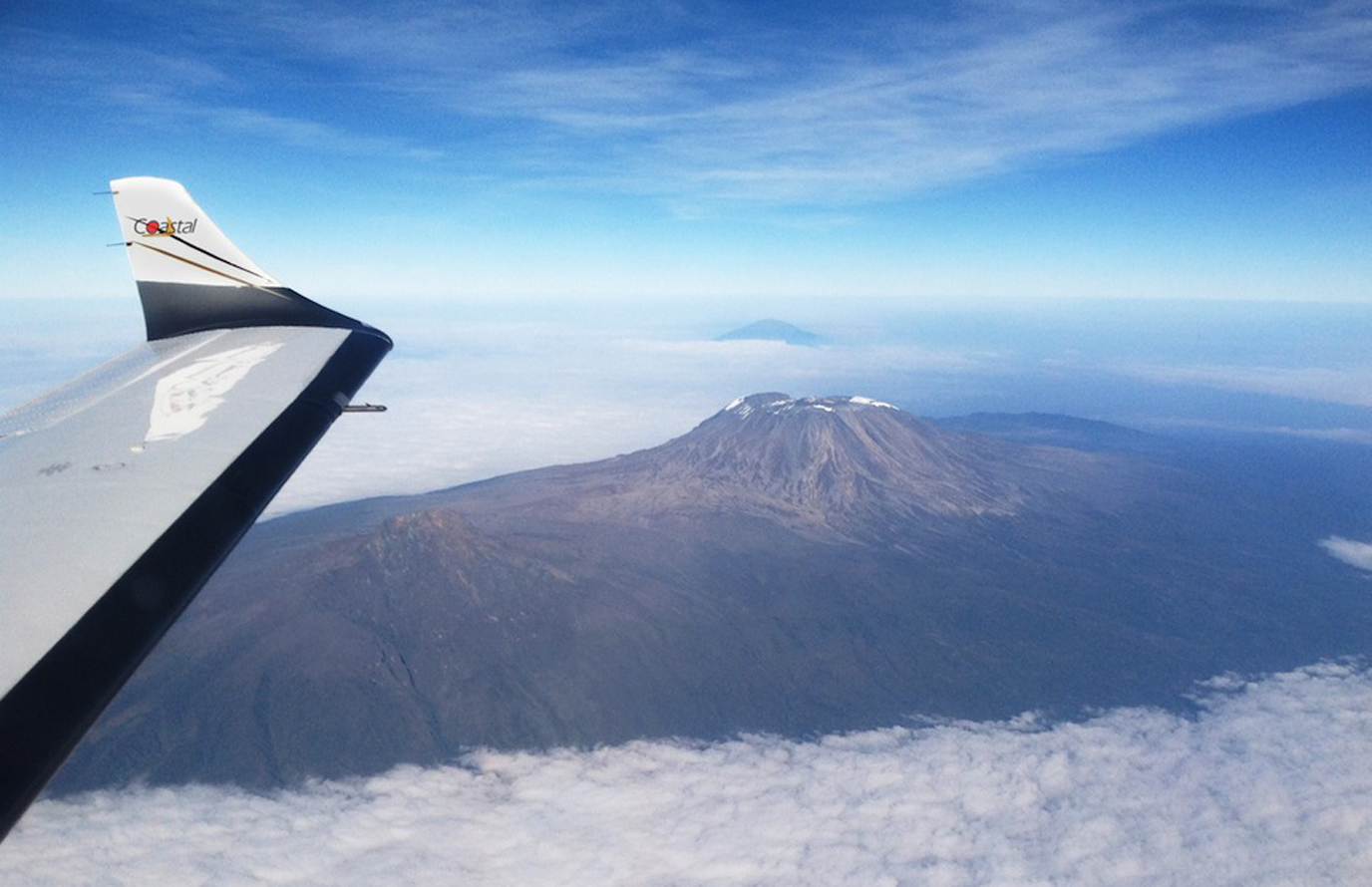 Every now and then we organize group joining climbs with fixed departure dates. On other days of the week, for private or bigger groups, or for custom itineraries, Tranquil Kilimanjaro also organizes treks.
Every now and then we organize group joining climbs with fixed departure dates. On other days of the week, for private or bigger groups, or for custom itineraries, Tranquil Kilimanjaro also organizes treks.
A guaranteed departure time for a certain route with, typically, five to ten passengers is referred to as a “planned departure.” This is the most affordable choice, and it’s also a great opportunity to meet and get to know new people. It is recommended to reserve a private departure if you want to go alone, either with a partner or a member of your family. Then you can hike at your own pace without mixing with other hikers.
You might want to arrange a climb of Kilimanjaro for a business, as a team-building excursion, or to raise money for a good cause, lets say a charity. We would set up a Kilimanjaro private tour for you. Your group might be as small as one person or as large as 35 to 100 people.
Tranquil Kilimanjaro can lead private groups on any of the other routes and provides regular group departures for the Marangu, Lemosho, and Machame climbs.
On the mountain
There aren’t any lodgings on Kilimanjaro. There are no paved walkways, running water, or cable cars to take you to the top.
Sleeping in tents, on sleeping mats, and in sleeping bags could be a novel experience for those who have never gone camping.
You will only stay in A-shaped, dormitory-styled, permanent huts on the Marangu Route. The porters will put up your tents before you get to the next campground on the other routes, which are camping routes. In actuality, porters carry the majority of the heavy items in addition to tents.
Both flush toilets and faucets are absent. Washing your face in a pan of warm water, taking a wet wipe “bath,” and maintaining your balance at the long drop toilets can be wild and a lovely experience.
Extreme temperature fluctuations are to be expected. Be ready for hot, muggy weather in the forests and for wind, ice showers, and below-freezing temperatures at higher altitudes. You should put on thermal underwear, hiking boots, warm gloves, and thermal socks of superior quality.
A total of five different climate zones, including lush rainforest, low moorland, an alpine desert, and the fabled frigid peak, will be encountered on the mountain. The remarkable biodiversity of Kilimanjaro is ultimately celebrated.
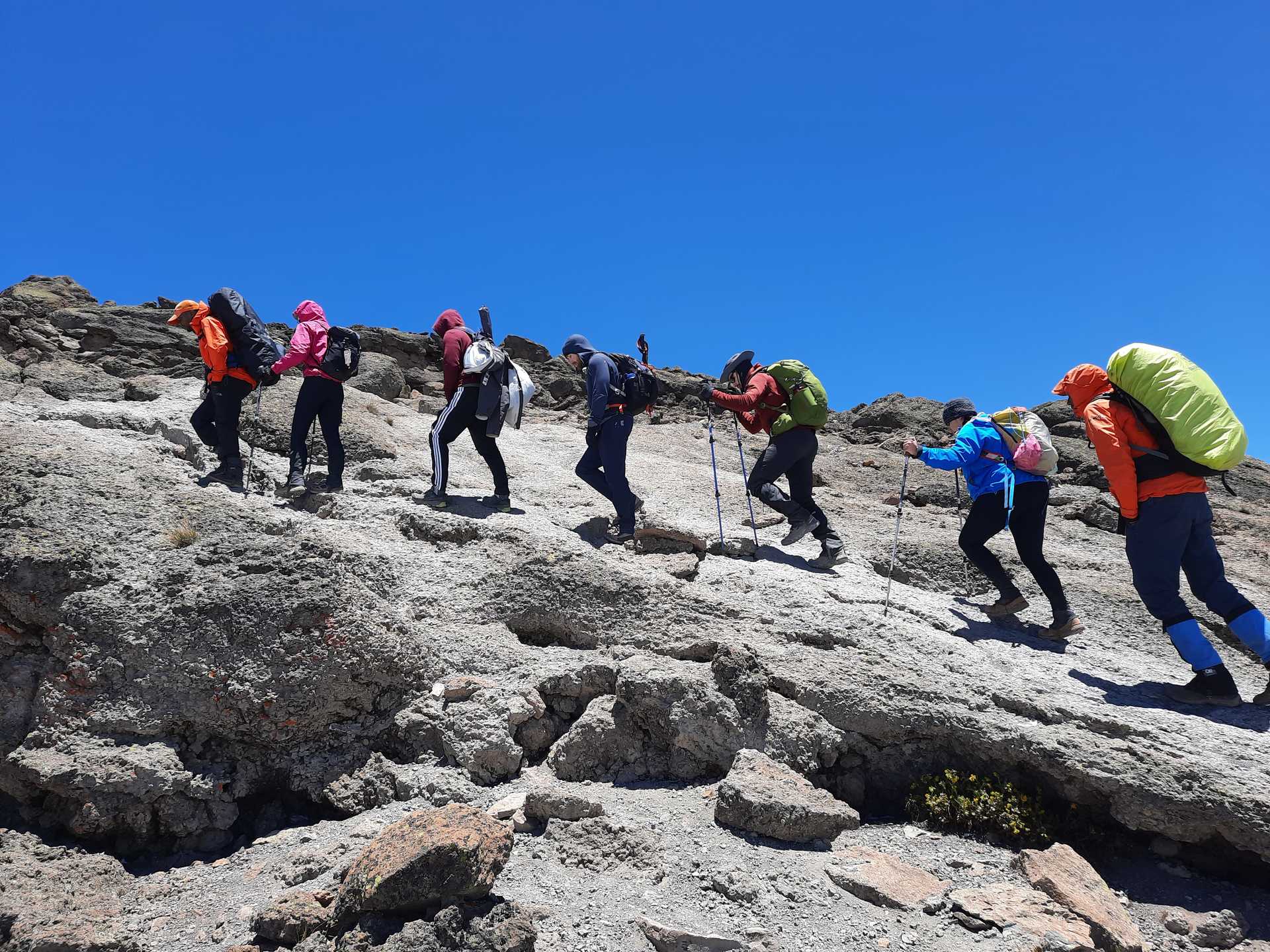 Read more about the climate zones on Kilimanjaro here.
Read more about the climate zones on Kilimanjaro here.
Although certain ways to the peak of Kilimanjaro are more secluded and less traveled, you will undoubtedly see other groups taking up the ultimate challenge of climbing Kilimanjaro on the more popular routes as well as at camp. Despite this, despite the mountain’s size, it never feels overly crowded.
Your body could exhibit odd behaviors. The altitude can stress all of your systems, and you might question your sanity for trying this incredible, risky workout. It can be too chilly to wash or change clothes.
On summit night, your lungs may be in need of oxygen or a cigarette and your head may hurt. You must maintain a slow pace while moving extremely slowly. Slowly, slowly, or “pole pole” as they say in Tanzania. This will be your adage for the mountains.
Breathe, then continue. Slowly. It will be rewarding.
Sleeping on the mountain
Although you can rent a sleeping bag from us if necessary, we advise bringing your own. After every trip, we make sure to wash (and dry) our bags. Make sure your sleeping bag is sufficient for temperatures of -12°C or below if you’re bringing your own, or bring an inner for added warmth.
We provide sturdy three-person tents and sleeping bags as part of our rate.
To ensure that you have enough room for your stuff and a comfortable night’s sleep after a long day, we only utilize the three-person tents for two people. You will arrive at your overnight destination with the mountain tents ready because porters will have already set them up. Mostly VAUDE tents are used by Tranquil Kilimanjaro.
Read more about the ultimate sleeping conditions on the mountain
 Meals and drinks
Meals and drinks
All food and catering materials are transported by porters and cooks. Bring your own snacks if you like. This is suggested as a way to battle weariness and incase you experience symptoms of altitude sickness. Snacks with a lot of sugar, fat, and energy, such as chocolate bars, energy bars, peanuts, and biscuits, are excellent. For each day you spend on the mountain, we advise you to pack at least two snacks.
You’ll get good food. Cooks and porters who carry utensils, pots, food, and equipment prepare all meals. You’ll hydrate well. Porters will collect water from streams, which will then be purified by filtering and boiling it before being offered as hot chocolate, coffee, or tea. To stay hydrated enough to lessen the effects of altitude sickness, you must consume at least three liters of water each day. The porters will also supply you with enough cold water to drink during the day each morning.
You will be offered eggs, sausages, oatmeal, and bread for breakfast. Jam, peanut butter, and margarine are extras.
A boiled egg, a sandwich or bun, a piece of chicken, biscuits, fresh fruit, and a carton of juice are typically included in a packed lunch. A heated meal called supper typically includes soup, meat, vegetables, starches, and fruit. The mess tent comes equipped with a table, seats, and appropriate utensils. We don’t serve alcohol, but we do offer tea, coffee, and hot chocolate with every meal. With early notice, we can accommodate vegetarians, people with dietary allergies, and Kosher and Halaal diets. During mealtimes, a designated waiter and his helper will attend to all of your needs.
Check out the Mount Kilimanjaro meal plan
 Hygiene
Hygiene
On Kilimanjaro, there are no showers, and the icy streams are a welcome relief. You will have access to some warm water every morning and evening to wash your hands and face. The bathrooms are fairly simple. Each campsite has wooden buildings that hold these “long drop” toilets. Mobile toilets are provided free of charge for private departures on camping routes. For personal hygiene, wet wipes and toilet paper are necessary.
If you want to experience the ultimate Kilimanjaro adventure with us, please contact us for a free quote.
Read our Ultimate Kilimanjaro experience reviews
To get an understanding of how we guide our Kilimanjaro treks, you can read our nice reviews that are unbiased from our past clients talking about their experiences on the mountain. Not only on Mount Kilimanjaro but also on Mount Meru. We collect our ultimate Kilimanjaro reviews on TripAdvisor and Trustpilot.
![]()

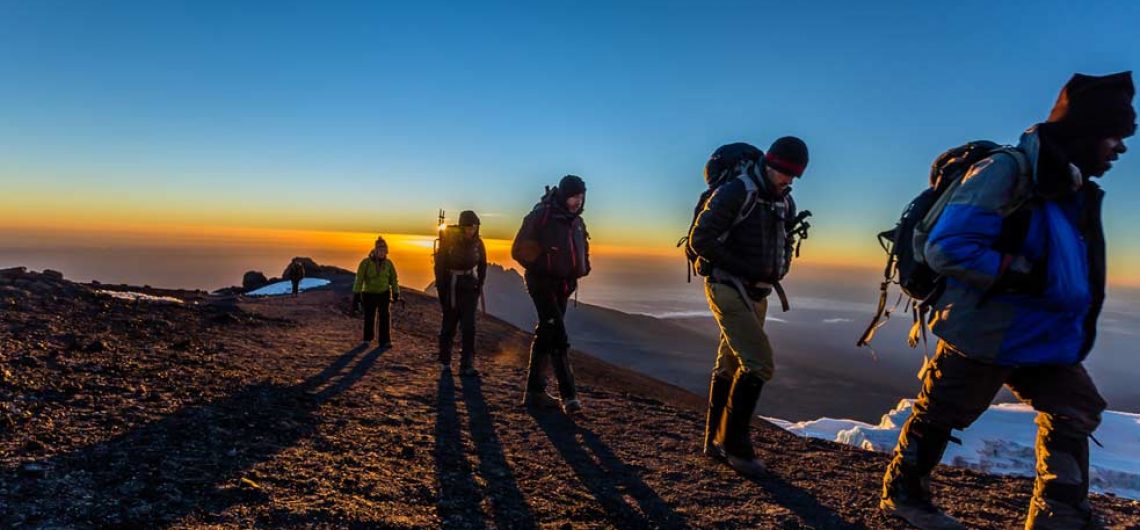
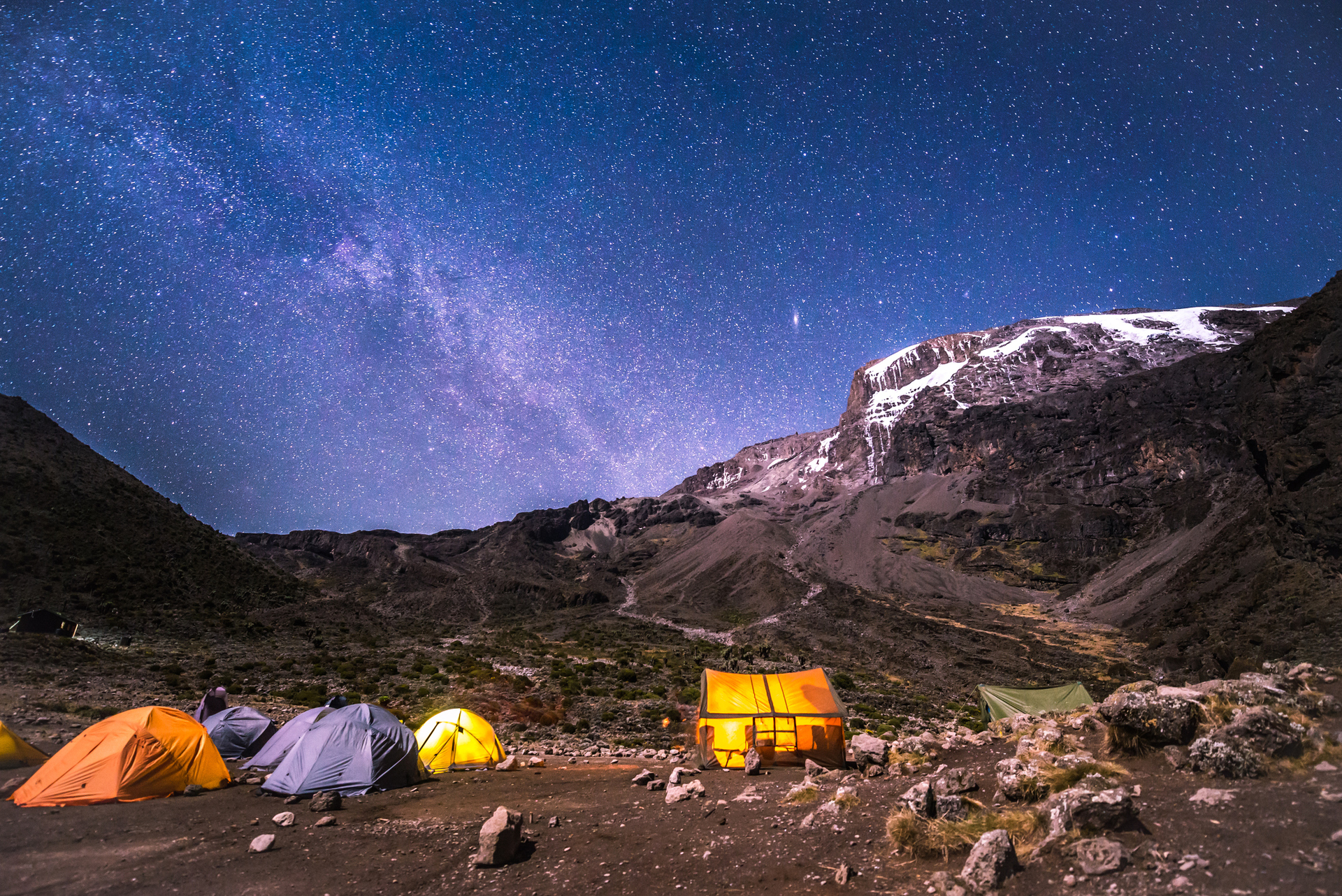 Meals and drinks
Meals and drinks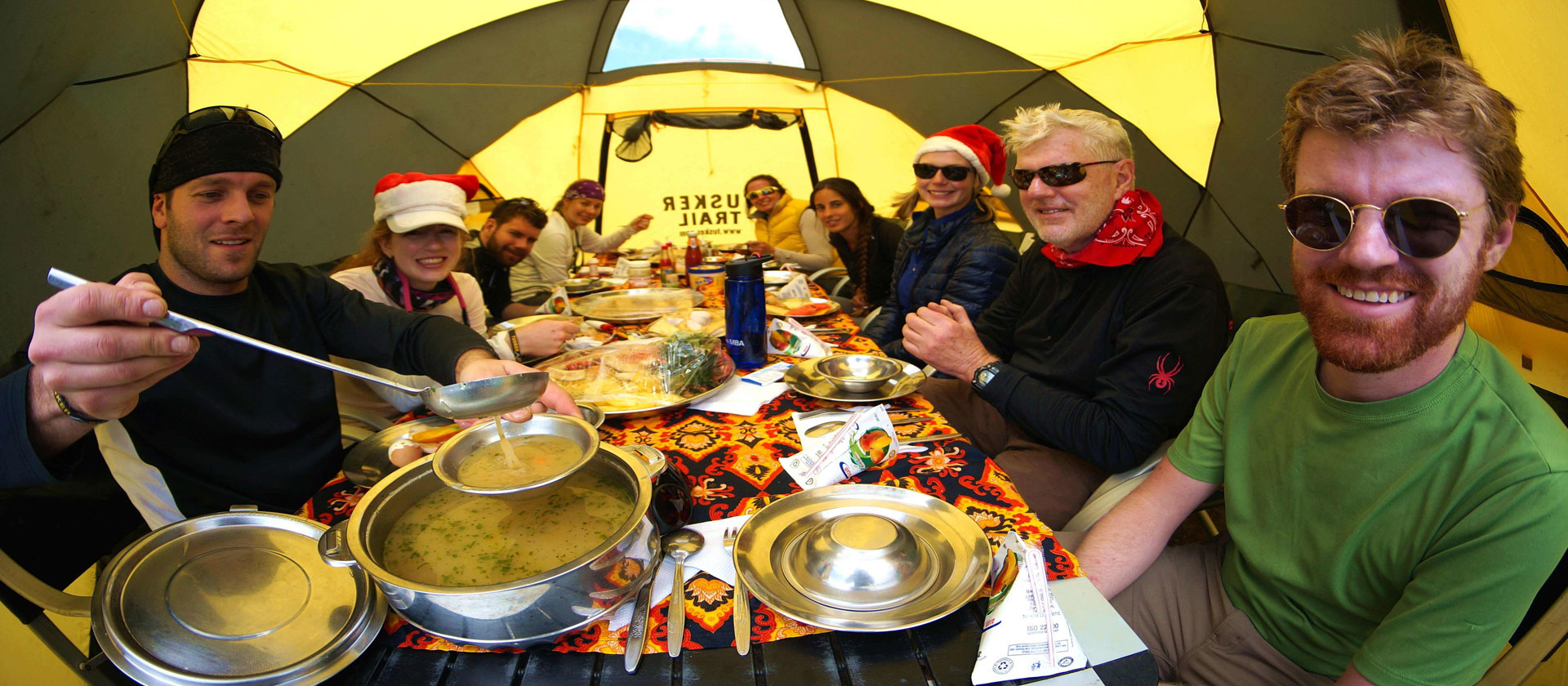 Hygiene
Hygiene
Comments